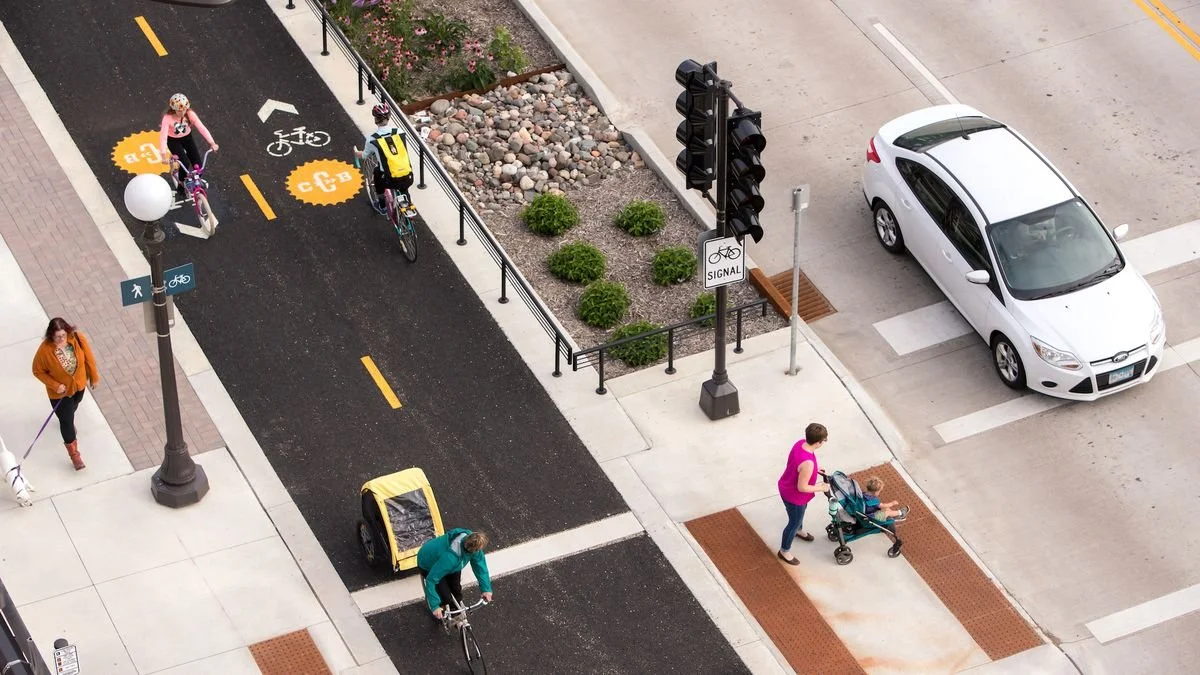In the summer of 2016, my pregnant wife and I found ourselves in a terrifying situation. While test driving a Subaru Outback, a car seemingly appeared out of nowhere and T-boned us. All airbags deployed, and the vehicles collided in a shower of glass and plastic. Miraculously, everyone, including our unborn baby, was unharmed. The next day, we learned that our insurance would cover the cost of the dealership’s car, sparing us financial strain just as we were about to welcome a new family member.
Despite our relief, the incident left us shaken. The streets were empty that evening, and we knew our Capital Heights neighborhood well. Both of us recalled seeing no cars when we pulled out of the shopping center and turned left across the two opposing lanes onto Jefferson Highway at the intersection with Capital Heights Ave. What went wrong?
A year later, a headline caught my eye: “Motorcyclist Killed on South Foster.” South Foster Drive runs parallel to Jefferson Highway and has the same blind dogleg of a turn near Capital Heights Avenue. It seemed likely that, just like in our accident, the motorcyclist had been unable to see the danger in time.
These intersections were notoriously dangerous. In 2015, the Center for Planning Excellence (CPEX) collected feedback from area residents on what they loved about their neighborhood and what needed change. Large maps set up at a local church’s multi-use room were dotted with red markers where Capital Heights Avenue intersects with South Foster Drive and Jefferson Highway, accompanied by comments like “dangerous to walk across,” “can’t cross with a stroller,” and “feels like playing Frogger in real life.” Gabby Loubiere, a local business owner, highlighted the community's concern: “I’ve had Brew Ha-Ha for 20 years…the most common request I get is for a crosswalk. It is such a dangerous street.”
The need for safer crossings was clear.
Using the community input they collected, CPEX developed the Street Smart Neighborhood Connectivity Plan, recommending safety enhancements for the two intersections, including High-Intensity Activated crossWalK (HAWK) beacons to stop traffic for pedestrians and cyclists. Residents and businesses were thrilled at the prospect of safer streets.
Yet, almost a decade later, the intersections remain unchanged. Why? Primarily due to funding shortages and the slow attrition of focus in community-led projects. In 2016, our neighborhood association presented the plan to local officials and received positive feedback, but were reminded of the high costs—over $100,000 per beacon. Discouraged, we shifted our focus to other projects like enhanced street striping and new sidewalks.
Despite the stall, there is hope. The 2024 General Meeting of the Capital Heights Neighborhood Association saw robust support for the HAWK beacons. The Capital Heights Crime Prevention and Improvement District has even budgeted funds for neighborhood improvements, prioritizing the beacons.
District Commissioner Matt Callac emphasized that adding a HAWK beacon at Capital Heights and South Foster would create a permanent safe crossing to connect the two halves of the neighborhood. Echoing this sentiment, Harry Schexnayder, President of the Capital Heights Neighborhood Association, highlighted that signaled crossings at these intersections would provide essential safety and comfort for walkers and bikers. Support from the mayor’s office and Baton Rouge’s Director of Transportation, along with potential funding from the MoveBR plan, has further invigorated efforts.
Support from local stakeholders was loud and clear: Mark Martin, Chair of the city/parish Complete Streets Citizen Advisory Committee, noted that HAWK signals at these locations would significantly enhance safety and encourage more people to ride bicycles. Local stakeholders also back the project, with Amber Heard, President of the Mid City Merchants Association, stating that these safety enhancements prioritize community well-being and foster a thriving business environment. Dustin LaFont, Executive Director of Front Yard Bikes, added that safer infrastructure increases access and alleviates barriers to opportunity.
Despite the overwhelming enthusiasm for this project and the technical justification provided by the Street Smart plan, there's no guarantee that Capital Heights will get our H.A.W.K. beacons or other meaningful safety enhancements at these intersections without buy-in from local leaders and significant dedicated funding. As with any plan, local champions are needed to make the vision a reality.
However, once-again, our neighborhood is re-engaged! Post-Covid, many lamented the loss of community as once-thriving events and groups struggled to come back. People moved in and out of our neighborhood, and the collective memory of our past activism for improving our community began to fade. Yet, the need to safely cross Jefferson Highway and South Foster Drive kept the Street Smart plan alive.
Nearly ten years after the development of the Street Smart Neighborhood Connectivity Plan, two supporters brought up the crosswalks at a meeting of eight residents. This led to a general neighborhood meeting that reignited enthusiasm among attendees. Cooperative endeavor agreements were signed between neighborhood boards, and proposals were made to receptive city leaders. As of this publication, engineering firms are being asked to submit design proposals, and potential funding has been identified, pending final approval.
We’re committed to seeing this through. I look forward to a day in the not-too-distant future when I can safely cross the street with my wife and our daughter, heading to Brew Ha-Ha for coffee and cakeballs, enjoying the safe, vibrant, and connected neighborhood we’ve worked so hard to improve.
Thank you to the Center for Planning Excellence for inspiring and guiding our efforts with the Street Smart Neighborhood Connectivity Plan. Their professional and collaborative work continues to lead vital projects for our state. I am a proud CPEX supporter, and if you would like to support CPEX or learn more about their work, visit www.cpex.org.
Written by: Tyler Hicks, President at Snakebite Consulting & Capital Heights resident


